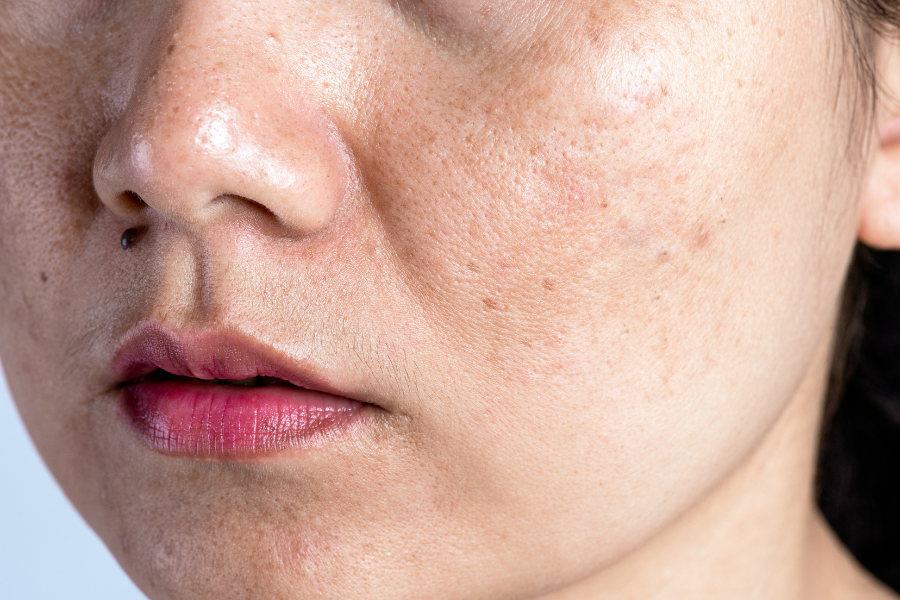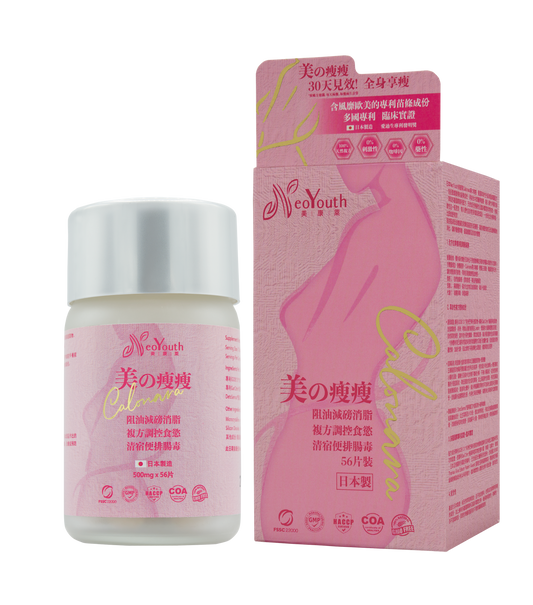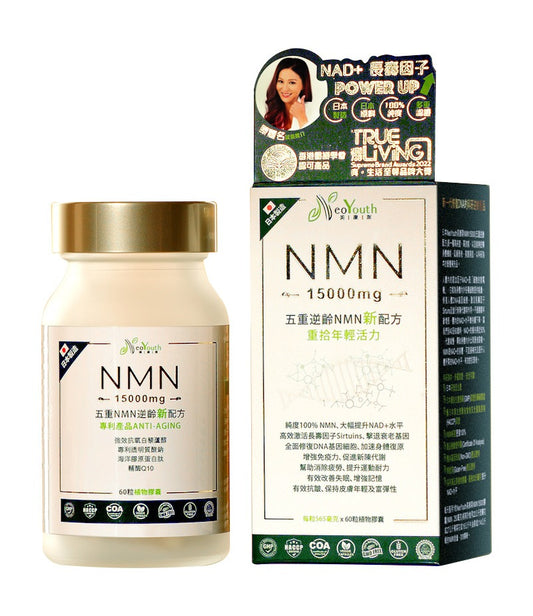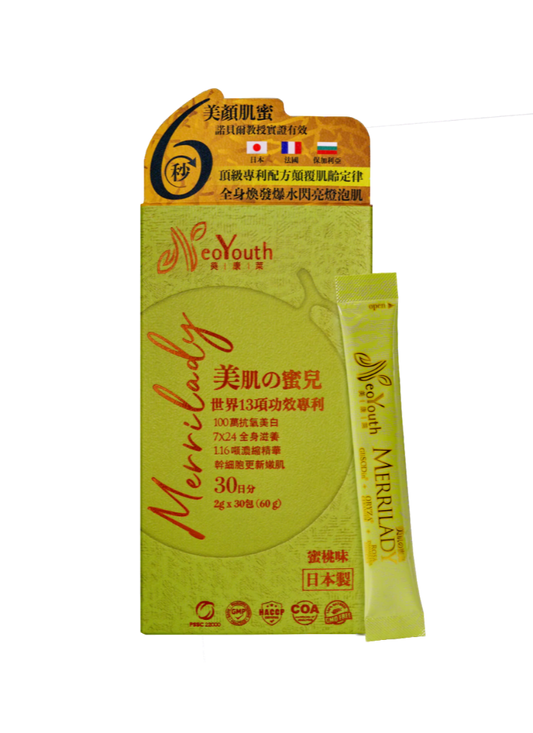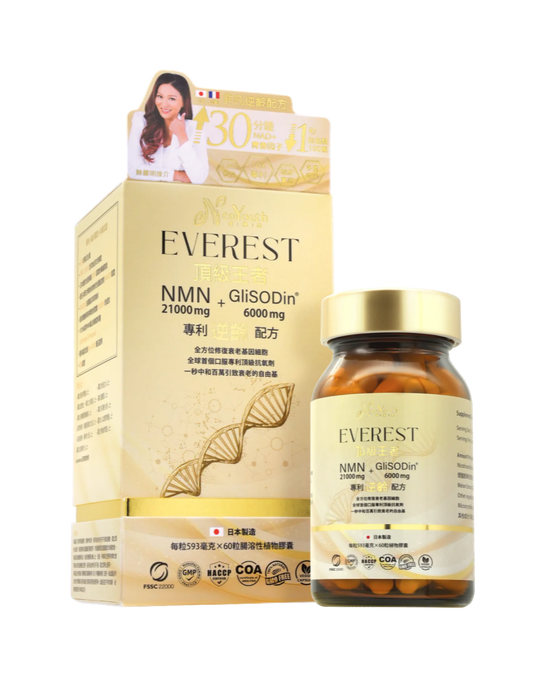Skin aging has many causes, including ultraviolet radiation and genetics, but sugar is also a major culprit. Skin glycation refers to the effects of the "glycation" process in the body on the skin, leading to signs of aging. NeoYouth will explore the characteristics of skin glycation, foods that cause glycated skin, and methods to combat and improve glycated skin.
What is skin glycation?
"Glycation" refers to the process by which sugars bind to proteins in the body. Initially, glycated proteins revert to their original state. However, if excessive sugar is ingested, proteins in the body, due to prolonged contact with sugar, will form advanced glycation end products (AGEs). Since skin is composed of proteins, when proteins lose their original function, it greatly affects skin health. As excessive AGEs accumulate in the skin, they affect the function of keratinocytes and fibroblasts, thus causing the skin to lose elasticity.
Characteristics of skin glycation
The process of "glycation" stimulates the secretion of melanin[1]. Glycation end products also damage collagen in the skin's base layer, and collagen and elastin fibers become stiff and fragile, leading to skin glycation. Common characteristics of skin glycation include:
- Dull yellow skin
- Skin becomes loose and loses elasticity
- Increased wrinkles and fine lines
- Dry, dull skin
- Various skin inflammations, such as acne and eczema.
What foods can cause glycated skin?
Glycated skin is usually caused by poor dietary habits. The following will introduce foods that lead to the formation of advanced glycation end products in the body.
High sugar foods or drinks
Sugar is key to the glycation process. All high-sugar foods and drinks, such as candy, honey, desserts, and fruit juices, contain large amounts of glucose and fructose. Consuming large amounts of sugar will lead to the formation of excessive advanced glycation end products (AGEs).
Fried and grilled foods
Advanced glycation end products (AGEs) are produced not only in the human body but also in food. The cooking temperature and method of food also affect the content of AGEs in food. The higher the cooking temperature, the more AGEs will be produced in food. Therefore, foods fried or grilled at high temperatures can also lead to skin glycation.
carbohydrate
Foods high in rapidly digestible carbohydrates are classified as high-GI foods. GI stands for Glycemic Index. High-GI foods are easily digested; during the digestion of carbohydrates, they are converted into glucose, causing a rapid rise in blood sugar and leading to the production of advanced glycation end products (AGEs). High-GI carbohydrates include rice, white bread, and glutinous rice.
A list of skincare methods to combat glycation
Improve eating habits
Combating glycated skin starts with healthy eating habits, including reducing excessive sugar intake. Besides avoiding high-sugar foods and high-GI carbohydrates, it's recommended to replace frying and grilling with boiling and steaming to slow down the glycation process. You can also choose low-glycemic index foods such as brown rice, whole-wheat bread, and red kidney beans to help maintain stable blood sugar levels.
Cultivate good living habits
Studies have shown that moderate exercise can effectively prevent the accumulation of excessive glycation end products in the body and reduce symptoms of inflammation[2]. In addition, sufficient sleep can also help reduce stress and slow down the glycation process of the skin.
Sunscreen and skincare
Excessive sun exposure accelerates skin aging, so it's essential to use sunscreen when outdoors and avoid prolonged sun exposure to reduce UV damage. In addition, daily skincare helps the skin fight oxidation and glycation, preventing the accumulation of excessive advanced glycation end products (AGEs).
What are some ways to improve skin glycation? I recommend NeoYouth (美康莱) and Merrilady (美肌の蜜儿) from Japan.
How exactly can we prevent and improve skin glycation? NeoYouth Merrillady, a Japanese skincare product , boasts 13 international efficacy patents. Combining revolutionary triple-care ingredients with three nationally recognized scientific formulas in a perfect golden ratio, it has been clinically proven to provide 24-hour continuous, highly effective skin nourishment and rejuvenation, offering hydration, brightening, anti-inflammation, and protection against oxidation by 1 million times. This effectively improves skin glycation, restoring youthful, healthy, and firm skin.
NeoYouth's Merrilady, a Japanese skincare brand, features three world-class ingredients, including GliSODin®, a patented French melon extract known as "super enzyme SOD." This ingredient is a top-tier component in the clinically proven antioxidant pyramid and is extracted from natural plant active ingredients. It is the world's first clinically proven SOD that is effective orally and can be absorbed through the digestive system.
The Japanese patented Oryza Ceramide® (also known as ceramide or ceramide) is the only ingredient in Japan that has been clinically proven to have both moisturizing and whitening effects. It can replenish moisture in the skin layers and strengthen the skin barrier to prevent moisture loss.
In addition, the high-concentration extract of Bulgarian Damask rose stem cells contains unique active essences and a variety of nutrients, which are effective in protecting skin cells, promoting epidermal cell regeneration, improving the skin's resistance to ultraviolet rays, and anti-inflammation, and help prevent the inflammatory symptoms of skin glycation.
Having learned about the characteristics of skin glycation, foods that cause skin glycation, and how to combat and improve glycated skin problems, if you have any questions about NeoYouth Merrilady (美康莱Merrilady美肌の蜜儿) from Japan, please feel free to contact us or purchase our products .
References:
1. Advanced Glycation End Products in the Skin: Molecular Mechanisms, Methods of Measurement, and Inhibitory Pathways
https://www.ncbi.nlm.nih.gov/pmc/articles/PMC9131003/
2. Exercise, Advanced Glycation End Products, and Their Effects on Cardiovascular Disorders
https://journals.lww.com/hhmi/fulltext/2022/06030/exercise,_advanced_glycation_end_products,_and.6.aspx
3. https://www.domohornwrinkle.com.tw/tc/beauty/detail/1910001/
4. https://blog.skineed.com.tw/skincare-abc/%E8%82%8C%E8%86%9A%E7%B3%96%E5%8C%96%E8%88%87%E6%B8%9B%E7%B3%96%E9%A3%B2%E9%A3%9F-skin-glycation/
5. https://ambrosiaskin.com/blogs/the-journal/glycation-and-skin-aging

